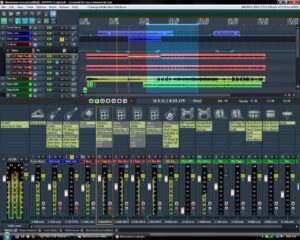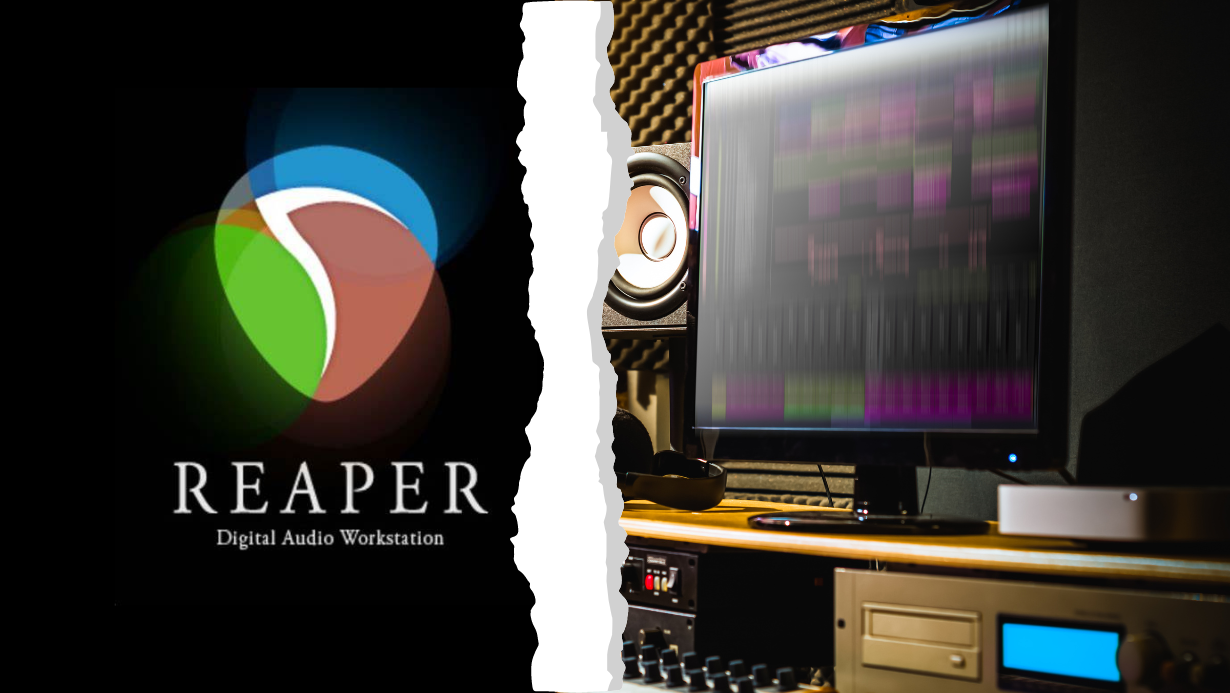Verdict: Reaper is an excellent choice for musicians looking for professional-level features and flexibility at an affordable price. With its impressi
Verdict: Reaper is an excellent choice for musicians looking for professional-level features and flexibility at an affordable price. With its impressive array of features and low system requirements, Reaper is an ideal DAW for anyone looking to get the most out of their music production without breaking the bank.
| Powerful automation tools | No built-in instruments or loops. |
| Record at almost any sample rate or bit depth | Unintuitive user interface. |
| Advanced audio editing capabilities | Extremely small and hard-to-read fonts. |
| Hundreds of audio effects | Designed mainly for music industry professionals. |
| Multi-channel audio recording, mixing, and mastering at a bargain price | No file-sharing options. |
| Highly customizable | |
| Extremely light memory footprint |
Audio production is essential to creating anything audio-related, from recording instruments and vocals to manipulating and applying effects to achieve the desired sound. Modern production is made possible by digital audio workstations (DAWs) such as Reaper, one of the most powerful and popular DAWs on the market. This article will provide an in-depth look at the REAPER Recording Software.
What Is Reaper?

Reaper is a digital audio workstation (DAW) from a small California-based company. It first launched in 2006 and has undergone continuous development ever since. Every few months, new features are released, giving podcasters additional tools to create podcast episodes.
Reaper is a powerful and comprehensive digital audio production software application designed to meet the needs of both professional and home studio users. Audio files can be dropped into Reaper and polished with built-in stereo, surround sound, and multichannel processing. It offers a full range of multitrack audio and MIDI recording, editing, processing, mixing, and mastering capabilities, with an extensive range of plugins, hardware, and digital formats available for extension.
Reaper can be used for a wide range of audio production tasks, from home and professional studio recordings to sound design, location recording, game development, education, and research. It provides automation, modulation, VCA, grouping, OSC, scripting, custom skin, layouts, and more. The latest version of Reaper is version 6.05.
Main Features Of The Software
An advantage of Reaper DAW compared to other DAWs is that you can get many features at a relatively low cost. Here is a look at Reaper’s features and how they operate.
 Recording
Recording
Using Reaper and a connected device, you can record and overdub audio from various sources, such as a microphone, instrument, midi controllers, and virtual plug-ins. It offers unlimited tracks to work with, and you can apply tracking effects, like reverb, to the audio you record in real-time. To begin recording, click the pink button at the left to arm the track and press the master Record button.
 Editing
Editing
REAPER’s tools for enhancing audio clips and MIDI data are powerful and versatile. Its piano roll editor is user-friendly and not as complicated as those found in more mature DAWs, making it easy to edit and customize each track.
 Embedded FX plugins
Embedded FX plugins
Reaper supports various audio plug-in formats, including VST, VST3, AU, DirectX, and JS (Cockos’s own Jesusonic format). Plenty of free plug-ins are available on the web for Reaper, as well as professional packages like Native Instruments Komplete and IK Multimedia SampleTank for those who can afford them. When installed on a track, VSTs are tucked away behind an FX button, but filling a project with virtual synths is still manageable.
 Multi-Language Feature
Multi-Language Feature
Choose from a big selection of language alternatives to run the software program. Deutsch, Polish, English, German and Japanese comes integrated.
 Enveloped MIDI CC Feature
Enveloped MIDI CC Feature
Process and manage MIDI CC statistics as envelopes that continuously collect data rather than discrete events. Additionally, support for 64-bit inner audio processing allows for the importing, recording, and rendering projects to various media formats.
 Auto-stretch Timeline
Auto-stretch Timeline
Reaper music software offers a main timeline window with pop-out windows, enabling users to work with multiple audio recordings simultaneously. It has automated stretching and re-confirming of audio for complex tempo changes. All editing can be done with drag-and-drop, with audio automatically time-stretched to match the tempo.
 Strong Stability
Strong Stability
REAPER Recording Software is known for its exceptional stability, with RAM usage and load times rarely affected by the resources used.
You’d only need:
- 12 megabytes (MB) for 32-bit Windows
- 13MB for 64-bit Windows
- 18MB for a 32-bit Mac
- 20MB for a 64-bit Mac
Additionally, the software offers support for various languages, allowing users to select their preferred language for running the program.
Reaper 6.05 brings several improvements and new features to its users, including: |
|
Disadvantages of Reaper
Some people may find the program’s user interface difficult to navigate due to the primarily empty screen initially encountered and the need to search through multiple dialog boxes. Others, however, may be able to pick up the interface quickly. Some may also feel that the interface is outdated.

The small size of Reaper can also be seen as a disadvantage. Its tiny size means it cannot afford to dress up its plain-looking dialog boxes. Additionally, any plug-ins you add will look out of place in the aesthetic of the software. Furthermore, its limited size means that few plug-ins come with the software, so if you are looking for something specific, you may have to find it from a third-party source. Sidechaining is possible with any plug-in, even those that cannot typically be side-chained, but this requires extra effort.
How Much Is The Reaper?
Reaper is one of the most cost-effective options, making it a great value for money. It allows users, professionals, and hobbyists to experience it for free for 60 days. After the trial period, one can purchase the discounted $60 license or the $225 commercial license.
Discounted License |
Commercial License |
People may be eligible for a discounted price when purchasing Reaper, provided they meet specific criteria.
|
The commercial license is for those who do not qualify for the discounted license. This license is significantly more costly than the discounted license. |
Bottom Line
REAPER is a software program designed to simplify the audio production, editing, manipulation, and personalization processes for small businesses and non-profit organizations.


COMMENTS